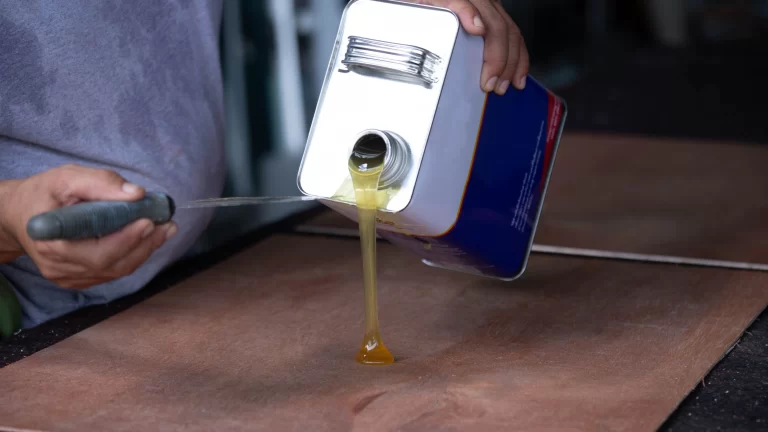What are Printing Inks?
Printing inks are liquids or pastes composed of pigments or dyes, solvents, and various additives. These components work together to transfer images and text onto substrates like paper, fabric, plastic, and metal. The choice of ink depends on the printing method, the material being printed on, and the desired final product’s properties.
Types of Printing Inks
1. Offset Printing Inks
Offset printing, also known as lithography, uses ink transferred from a plate to a rubber blanket, then onto the printing surface. Offset inks are versatile and widely used in:
- Commercial Printing: Magazines, brochures, and flyers.
- Newspaper Printing: High-speed, high-volume production.
- Packaging: Cartons and labels.
Properties:
- High viscosity for precise application.
- Quick drying to prevent smudging.
- Excellent color reproduction.
2. Flexographic Printing Inks
Flexographic printing uses flexible relief plates to print on various substrates. Flexo inks are ideal for:
- Packaging: Flexible packaging, corrugated boxes, and labels.
- Tissue and Paper Products: Napkins, paper towels, and gift wraps.
- Plastic Films: Food packaging and shopping bags.
Properties:
- Low viscosity for fast drying.
- Suitable for a wide range of substrates.
- Water-based and UV-curable options for environmental benefits.
3. Gravure Printing Inks
Gravure printing involves engraving images onto a cylinder, which picks up ink and transfers it to the substrate. Gravure inks are used in:
- High-Quality Packaging: Food wrappers and cigarette cartons.
- Publishing: High-circulation magazines and catalogs.
- Decorative Printing: Wallpaper and laminates.
Properties:
- Low viscosity for fine details.
- High pigment concentration for vibrant colors.
- Suitable for long print runs with consistent quality.
4. Screen Printing Inks
Screen printing uses a mesh screen to transfer ink onto a substrate, except in areas made impermeable to the ink by a blocking stencil. Screen printing inks are versatile and used in:
- Textiles: T-shirts, hoodies, and other apparel.
- Promotional Items: Mugs, pens, and bags.
- Industrial Printing: Electronics and circuit boards.
Properties:
- High opacity for bright colors on dark substrates.
- Thick consistency for raised effects.
- Various formulations for different substrates (plastisol, water-based, and discharge inks).
5. Digital Printing Inks
Digital printing includes inkjet and laser printing, where images are sent directly to the printer from a digital file. Digital inks are used in:
- On-Demand Printing: Short runs of books, posters, and brochures.
- Personalized Printing: Custom invitations, greeting cards, and photo books.
- Wide-Format Printing: Banners, signs, and vehicle wraps.
Properties:
- Quick-drying for immediate handling.
- Suitable for variable data printing.
- UV-resistant options for outdoor durability.
6. UV Curable Inks
These inks are cured using ultraviolet (UV) or light-emitting diode (LED) light, making them ideal for high-speed production. They are used in:
- Packaging: Food and beverage labels.
- Commercial Printing: Business cards, brochures, and posters.
- Specialty Printing: 3D printing and prototyping.
Properties:
- Instant curing for fast turnaround.
- High durability and resistance to abrasion.
- Eco-friendly options with low VOC emissions.
Common Uses of Printing Inks
1. Commercial Printing
Printing inks are crucial in producing marketing materials, corporate stationery, and publications. High-quality inks ensure that colors are vibrant and text is crisp, making a lasting impression on readers.
2. Packaging
In the packaging industry, printing inks are used to create attractive and informative packaging that helps products stand out on the shelves. Inks must adhere well to various materials and withstand handling and environmental conditions.
3. Textile Printing
Screen printing inks are widely used in the fashion and textile industry to print designs on garments. These inks need to be durable, washable, and resistant to fading.
4. Industrial Printing
In industrial applications, printing inks are used to print on electronics, automotive parts, and other components. These inks must offer high precision and durability to meet strict performance standards.
Benefits of Using Different Printing Inks
1. Versatility
With a wide range of printing inks available, there is a suitable option for nearly every application, from high-quality publications to durable packaging and vibrant textiles.
2. Durability
Modern printing inks are designed to be durable and resistant to various environmental factors, ensuring that printed materials maintain their quality over time.
3. Environmental Considerations
Many printing inks are formulated to be environmentally friendly, with water-based, low VOC, and UV-curable options reducing the impact on the environment.
4. Cost-Effectiveness
Advancements in printing ink technology have led to more efficient inks that reduce waste and improve productivity, making printing processes more cost-effective.
Conclusion
Printing inks are a vital component of the printing industry, offering a diverse range of options to meet the needs of various applications. Understanding the different types of inks and their properties can help you choose the best ink for your specific project, ensuring high-quality results and maximum efficiency.
Whether you’re producing vibrant marketing materials, durable packaging, or custom textiles, the right printing ink can make all the difference. Explore the world of printing inks and discover how these essential materials can enhance your printing projects, providing color, durability, and versatility in every application.









